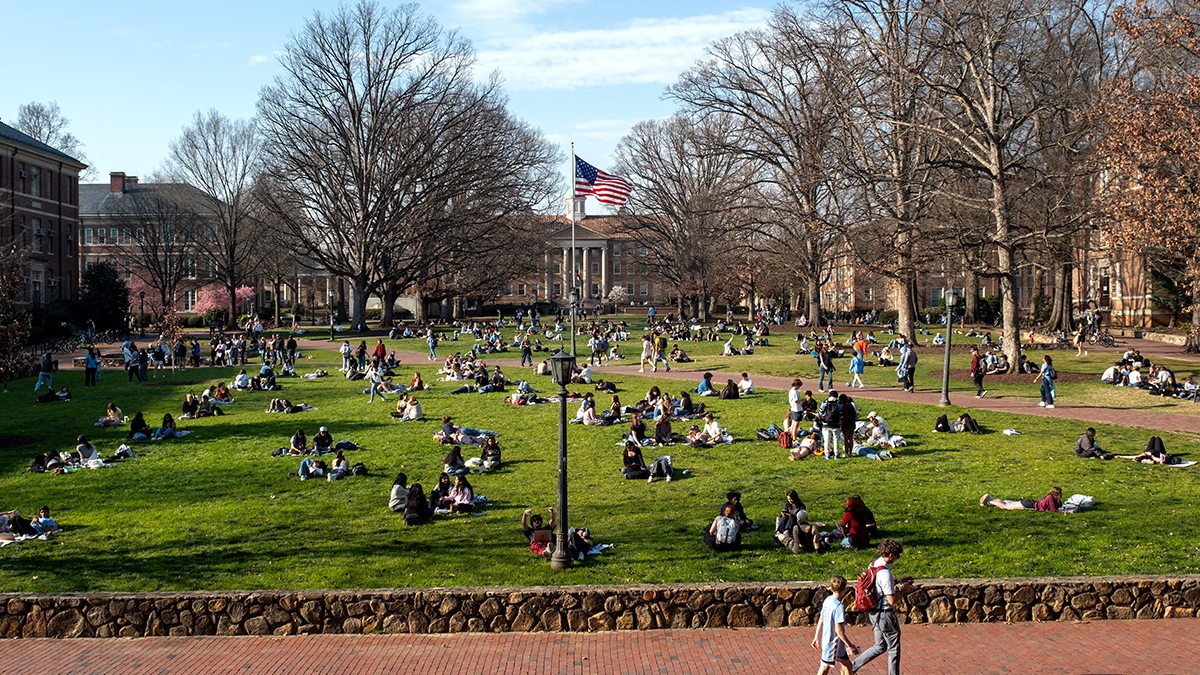Nature is good for kids
A new study from FPG researchers suggests preschoolers living near green space have better mental health.

Children who live in areas with natural spaces (forests, parks, backyards) from birth may experience fewer emotional issues between the ages of 2 and 5, according to a recent study. The research was funded by the National Institutes of Health’s Environmental Influences on Child Health Outcomes program.
While research has suggested that time in nature is important for mental health, studies examining the effects on young children are limited. A group of ECHO investigators, including Nissa Towe-Goodman, a research scientist at the UNC Frank Porter Graham Child Development Institute, addressed this research gap. They analyzed information from parents about the behavior of their children from ages 2 to 11. They combined this data with the family’s residential address when the child was born and satellite data on live vegetation density around their homes.
What researchers found in their analysis, published in JAMA Network Open, was that higher levels of green spaces up to three-fourths of a mile from a child’s home were linked with lower anxiety and depression symptoms from ages 2 to 5 years. The association persisted even after researchers factored in the child’s sex, parent education, age at birth and neighborhood socioeconomic vulnerability. Researchers did not find a significant association between green space around the home and mental health symptoms in later childhood years from ages 6 to 11, when children spend more time at school.
“Our research supports existing evidence that being in nature is good for kids,” says Towe-Goodman. “It also suggests that the early childhood years are a crucial time for exposure to green spaces.”
Most research so far has been limited to studying one or a few cities at a time and focused on adult health. Because the ECHO Program collects data nationwide, researchers were able to examine data from children in 199 counties across 41 U.S. states. They explored the connection between exposure to green spaces from birth and anxiety, depression, aggression and other symptoms during early or middle childhood.
The study included children born between 2007 and 2013 and whose parents completed the Child Behavior Checklist, a common survey to rate a child’s emotional and behavioral symptoms. The 2,103 children included in the study ranged in age from 2 to 11, spanning early and middle childhood.
“In the future, researchers could look into what kinds of experiences in nature are connected to kids’ early mental health,” says Towe-Goodman. “Also, we should study how creating or preserving natural areas around homes and schools might make a difference in a child’s mental health.”
Towe-Goodman led this collaborative research in JAMA Network Open. Margaret Swingler also contributed to this work and is an author on the paper. Swingler is an FPG advanced research scientist and site principal investigator for the Family Life Project-ECHO at UNC-Chapel Hill.
“Bringing together scientists here at FPG and the broader ECHO community on this research has been an incredible experience,” says Towe-Goodman. “This work is truly a labor of love for me!”







